Native advertising: How much it costs, where it is located, what result

We illustrate with concrete examples what native advertising formats are, how much they cost and what to expect from each of them.
In 2017, 36% of Russian brands want to try native advertising . There is a lot of talk about her, but the situation with the native can be described something like this:
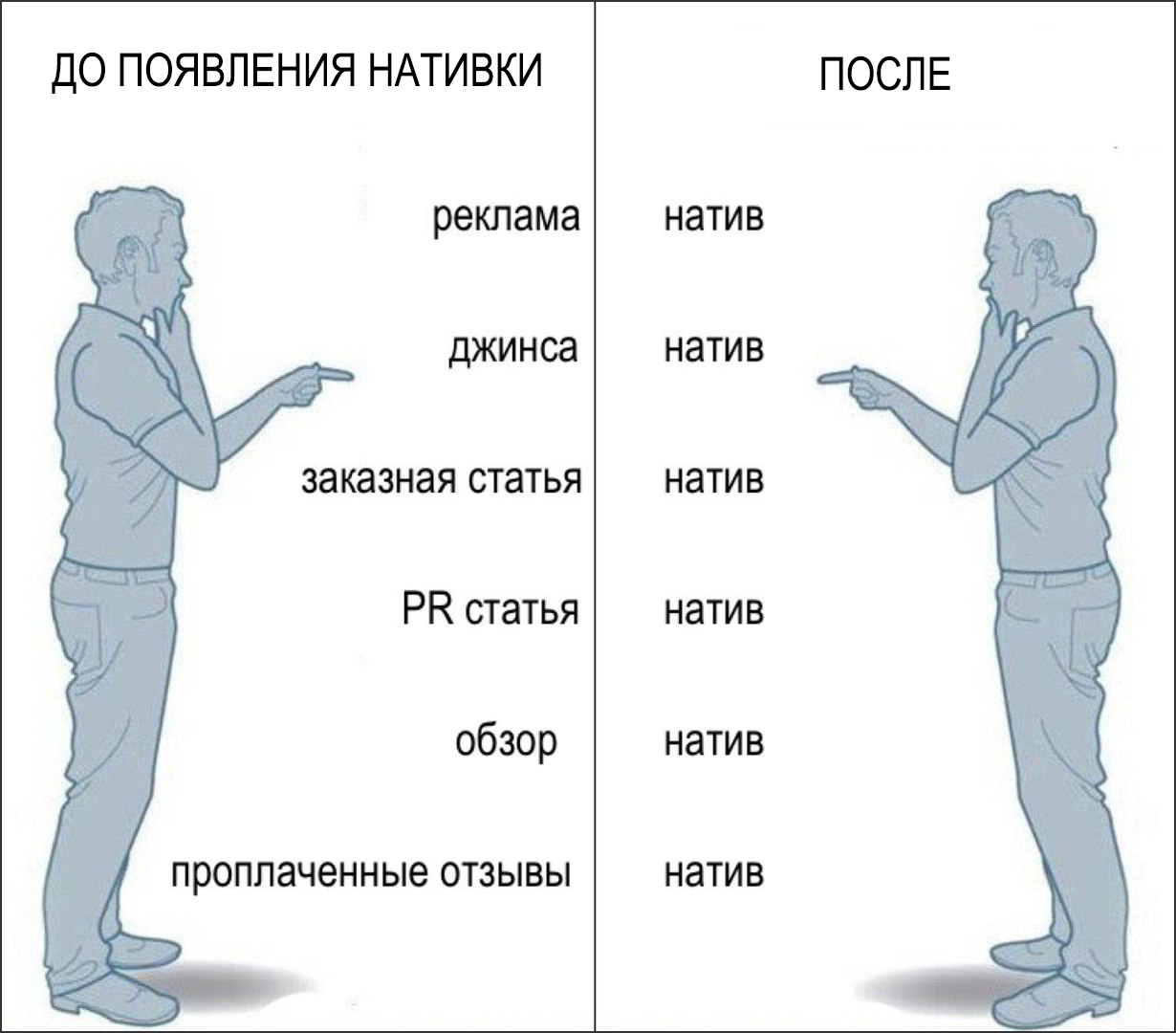
Even the Answers to Mail.ru are already native ads.
')
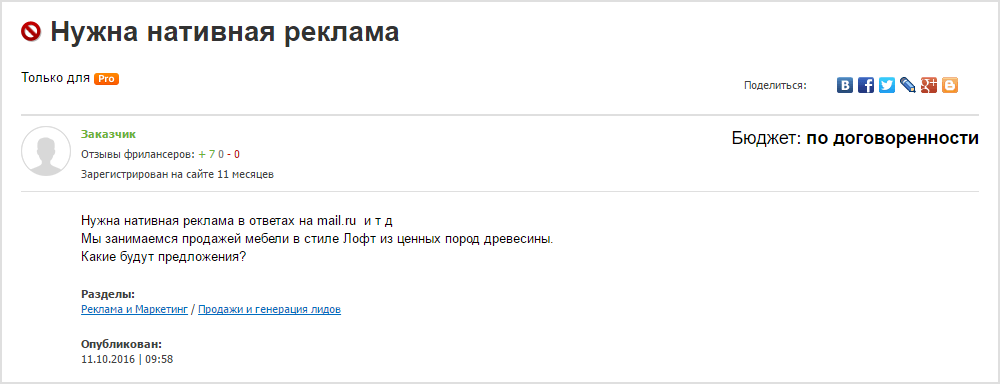
In order for 2017 to live a little easier, we tell you what, in fact, there are formats of native advertising and what is their specificity.
Business Insider in its study of the market of native advertising divided it into 2 simple and understandable types:
Special projects - sponsored content. Edition of the publication makes for the brand texts, microsites, games, videos, tests - any content that will be of interest to the audience of the publication and attract attention to the brand.
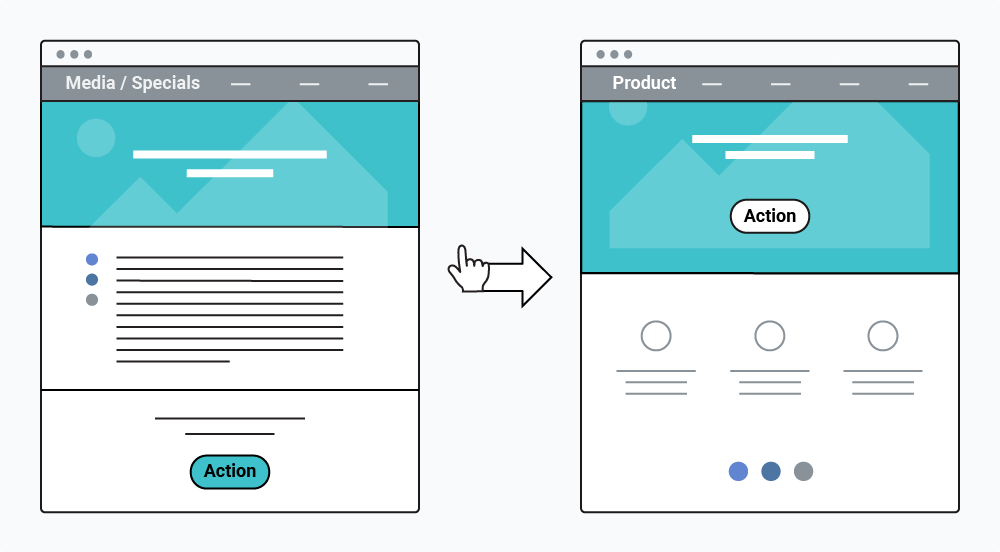
Native-display ad is an advertisement that is embedded in a ribbon. The user moves from the ad unit to the territory of the brand. In Russia, social networking — Facebook — and media recommendation services, such as Relap.io, make this type of native.
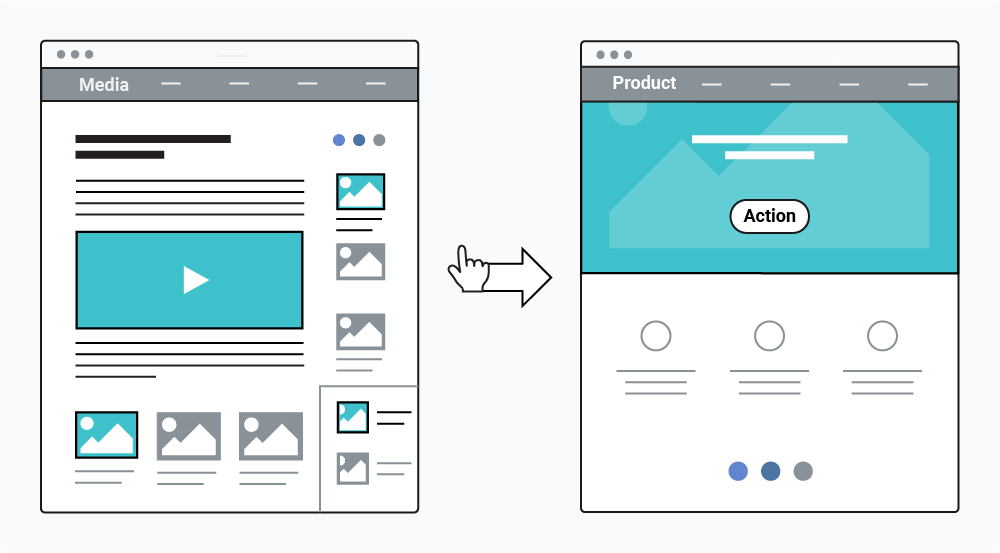
Special projects
The sponsorship project implies that both parties - the publication and the brand - are involved in its creation. The scope and content of the special project can be anything from one article to a regularly updated section on the site.
Russian publishers make specialists of all formats:
- Text - analysis of the topic: Medusa cards for the “Made” project.
- Tjournal test for the promotion of a new film with Ben Affleck.
- Sponsored Longrid for Alpha Bank on BigPicture.
- PostScience for Skoltech: an example of a sponsorship section that has been updated for two years.
- Special project on the Republic - the former Slon.ru
- The Village conducted an experiment and made two people do their daily activities, exuding a strong smell of sweat - it turned out to be a native for Rexona .
To understand how popular the sponsor content is: the Mediazone website, which writes about the plight of prisoners and torture in the colonies, made an expert in gifs in partnership with a cleaning service (!).

What to expect?
This will most likely be text.
Because the text is what the editorial staff can do best.
Western statistics are as follows: text content for experts is produced by 68% of publishers . Video and compound pages - with parallax, games, polls and blackjack - are offered by 53% and 45% of publications, respectively.
The format of the sponsorship material must be determined on the basis of brand goals. MIPT had a task to increase awareness, and N + 1 made a special project in the form of memes in social networks .
They will do everything for you
American statistics say that 42% of online publications do special editorial efforts.
An advertising agency can be connected to the project of the publisher and the brand (26% of publishers use the services of agencies), which creates content for the editors.
But it can be difficult to agree
We'll have to reckon with the editorial policy of the media. Publications reserve the right to control the content of the advertising publication. The publisher Meduza indicates that the advertiser has no right to interfere with the material sponsored by him.
The brand does not just get access to media readers, it uses its reputation - users trust advertising publication because they trust publication.
How much are special projects
The more complex the project, the longer it is created and more expensive. In 65% of publications, sponsored content is more expensive than traditional advertising formats.
- News on the Republic - from 75 000 p.
- Cards on Medusa cost from 200 000 rubles. A publication with gifs - from 250 000 p.
- “Special post” on vc.ru - for example, such - costs from 250,000 rubles.
- PR article on Tj - site with an audience of 2.5 million users per month - 90,000 - 200,000 rubles.
- Affiliate material on Afisha.Daily - 540,000 rubles
Most media use seasonal coefficients to calculate the cost of the project: the most expensive month is December, and the season is autumn.
The price of large projects - specially designed pages and sections, the production of video and games - is discussed with each advertiser individually and in the Russian market comes from 700,000 rubles.
Efficiency mark
All media evaluate the effectiveness of the special project in different ways. You need to negotiate a KPI before the campaign starts. There is no good research on the Russian market yet, but among American publishers, more than half rely on traffic.

The BigPicture.ru blog team started making sponsorship content before everyone knew the word “nativ”. Their longrids collect 1 million views. Development Director Alexander Kuksa told how they look at the assessment of the effectiveness of special projects.
“Recently sat with a friend and coolly lined up a sales funnel. He showed on his fingers that 1,000 people were coming and only 20 bought something. If you count in the moment, then I would be upset, why so little? And then I looked at the funnel. So they signed up, found something, looked for it, bought it. He looks at the statistics and sees that 3 times the overlap comes from the money invested in advertising. Just not everyone can count on. Everyone wants: “I will give 50 thousand. 1000 transitions, 5 purchases - everything is bad. " And let's see how many people have registered, new leads came or did not come, did you “catch up” with their retargeting? Plus, the story is connected with the fact that, in principle, they learned about the product. Everybody has to have a long explanatory work. ”
Meduza publisher Ilya Krasilshchik told in his Telegram channel how the site measures the effectiveness of native advertising.
“The success of a native is measured primarily by attendance - but this is the KPI of the site, customers often measure with other numbers, and the platform must take this into account. We provide the most complete information on the campaign using our own Insight statistics. There are sources of transitions, virality, time on the page, and the effectiveness of the announcement on the site. ”
Native-display ad
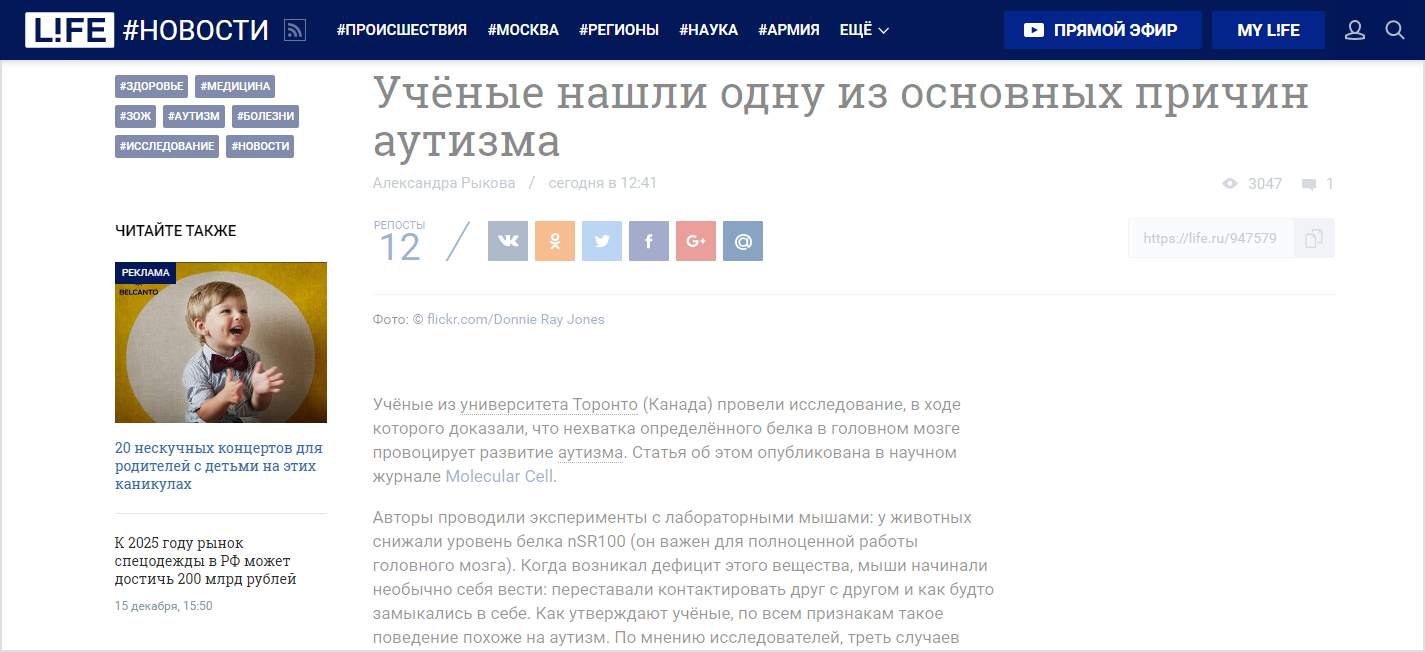
Advertising Relap.io on Life.ru
This is an ad unit embedded in the site content. It is usually located inside the publication or in the content around the article - in sections like “Read also” or “Popular”, where the user is used to looking for new information.
The format meets the main demands of the brands :
- Work with the largest media
- Convenience of purchase
- beauty
- Efficiency
What to expect?
You can advertise any content.
An ad unit can lead to a landing page, text, promo page, collect subscriptions, etc. Native-display ad is a replacement for banner formats that have completely stopped generating traffic for brands.
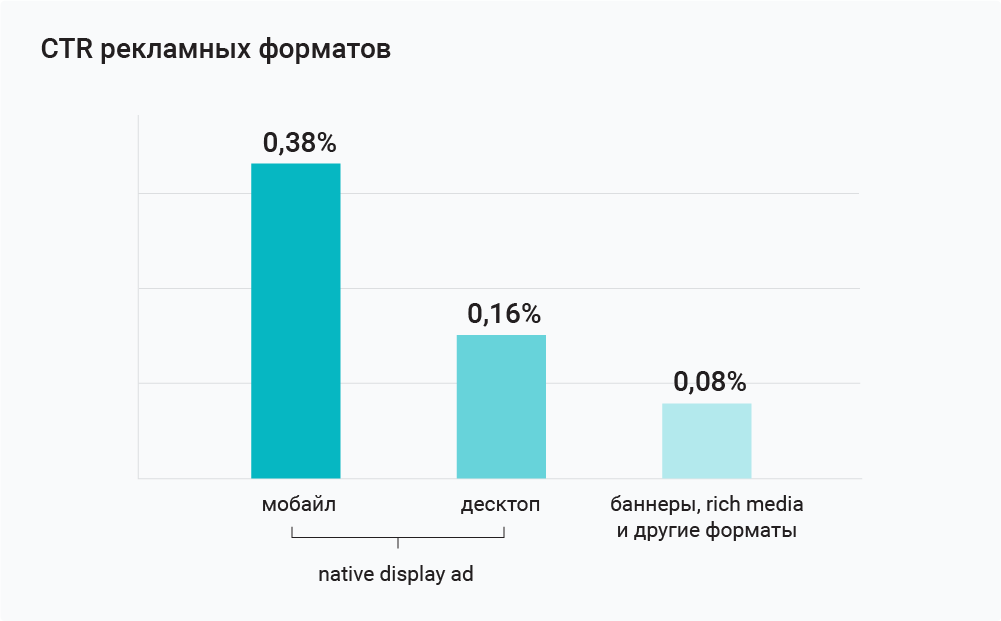
According to statistics, users are more likely to interact with advertising , which is embedded in the tape. According to the research of the company Sharethrought , 80% of users prefer advertising, which is organically embedded in the content and does not destroy the user experience.
Where will your ad show
In Russia, native advertising can be placed in most top media. RIA Novosti, Drive2.ru, Echo of Moscow, Rossiyskaya Gazeta, Life, TJournal, Dirty, Expert-partners of Relap. To advertise on them, write to us .
How it works and how much it costs
The client comes to us with tasks for targeting and placement. Brands want to show advertising to the audience that will be most interested in buying.
1. Preparation for launch:
Depending on the content you want to promote, the type of placement is selected.
For selling pages, a standard placement in the recommendation block in the body of the article is suitable.

An example of placement on the page
If a company wants to increase brand awareness, the ad unit built into the publication text works best.

An example of placement on the page
When an advertiser is looking for an alternative to television advertising, which has limited targeting, video advertising is used.

An example of placement on the page
2. Cost:
The average cost for advertising in a recommender widget (CPC) - from 20 rubles. for unique. This is a price with a client discount, but excluding targeting. In the display native, as in special projects, they use standard seasonal factors.
In the case of video (CPV), the brand pays only for fully watched videos. The cost of a guaranteed inspection - from 1 rub.
If a brand buys a “PR package” - an article in the publication + a display of an advertising widget that generates traffic to this article - the cost per unique goes from 20 to 30 rubles.
3. Run:
Among the sites on which our widget stands, we select the relevant tasks for the client, and determine the target audience among the readers.
1-2 days we prepare and agree with the brand promotional materials - pictures and headlines for each publication - and launch the campaign.
4. Evaluation of the results:
After 2-3 days, we check the results: we analyze the CTR of each ad unit and the post click - how users behave on the advertiser's site. This data is needed to adjust the campaign: change the appearance of the ads, placement or segments.
After that, we suggest that customers turn off less effective advertising and leave only the options with the best CTR and post-click.
We carry out such analysis of efficiency with each client 1-2 times a week during the whole campaign. This allows you to increase page conversion.
How do we find an audience
To advertise, we combine two types of audience segmentation - by user behavior and site content.
First, we analyze the pages that people watch, the content of the texts they read. We consider geolocation and the device from which the user came and other factors.
Secondly, for each site with a Relap block, we reduce publications with similar content into thematic arrays. For example, business or cooking. We know where and what articles users read. Thanks to this, we can distinguish audience segments by interest.
For example, we single out the “real estate” segment: these are readers who have recently been interested in housing prices and related topics.

Advertising Relap works cross-domain: we can show the developer’s advertising on RIA Novosti to those who were interested in real estate on another site.
So with the help of user behavior analysis, we will bring to the client's site people who are interested in buying an apartment.
How is the result evaluated
The brand pays for impressions (CPM) or unique users (CPC) who have moved to the site. All indicators - clicks / impressions / ctr - from the Relap side are reconciled with the client data
This year, with the help of native advertising, we promoted Rostelecom. There were several advertising campaigns, and as a result, advertising efficiency increased by 10-20% .
Source: https://habr.com/ru/post/318034/
All Articles